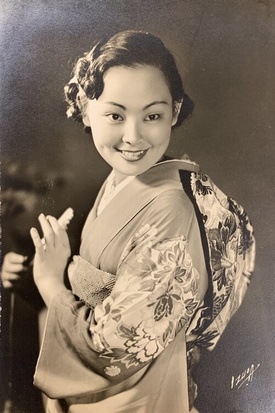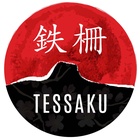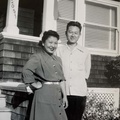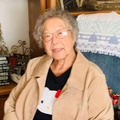“And as I was standing there, I was looking around to see, realizing that everyone was concerned about the attack and that they would be looking at me. I didn’t consider other Japanese, too. It was me that was to blame.”
— Jiro Oyama
Jiro Oyama’s long, fruitful life represents the essence of the achievement of the American dream. As the youngest son born to a hardworking family in the Boyle Heights neighborhood of Los Angeles, his early years were punctuated by tragic and difficult life events. When he was nine, his father died from a prolonged illness after a job on a fishing boat, leaving his mother with four children to raise alone. Then at 16, with adulthood just on the horizon, war broke out between Japan and the U.S., uprooting the Oyama family from Los Angeles to another world in Jerome, Arkansas. But through a series of pivotal decisions, one of which was answering yes/yes on the infamous “loyalty questionnaire,” Jiro was able to get out of camp to go to college to attend the University of Cincinnati, Northwestern University, and George Washington University, and later pursue his interest in the sciences. He would go on to work at the NIH, FDA, and finally at NASA Ames, where he spent the majority of his career. One of his research specialities—the effects of gravity on metabolism and other life processes—investigated the possible long-term effects of space travel.
Jiro’s successes and drive were also colored by tragedy. By the time he started college, his mother began to experience severe mental breakdowns brought on by the emotional toll of the incarceration. At her own factory job, she would be overly meticulous in her tasks and worked through the lunch break nearly every day without eating. When her paranoid episodes became severe, Jiro would have to take her to the doctor, but instead she would ask if he was taking her to the police station. “She broke down and her excuse was that she was not guilty. She was taking it at a personal level that she thinks because she was Japanese, it must have been that she felt responsible. All of this thing stems from persecution, the sense of guilt, paranoia, thinking that everything is against you.”
Our interview took place at the Japanese American Museum of San Jose with Jiro’s daughter, Misa.
* * * * *
My name is Jiro Oyama. Jiro is “second son” and Oyama is “big mountain.” I was born in Boyle Heights, East Los Angeles in the year 1925. We moved about three times within Boyle Heights before the war. So we were basically very permanent to that area. And I have a picture here of my graduation from First Street Elementary School. I thought that the general population of the Boyle Heights area was largely Mexican American and Caucasian but that’s not true. When you look at the picture, Asians represent a good number of students in my class.
I graduated there 12 years of age and then went on to Hollenbeck Junior High School, and then into Theodore Roosevelt High School for my ninth and tenth grade. When I was 16 years of age, the war started. Our family had a grocery store (with a liquor license) right next to the high school football field. And this was remarkable. The grocery store was bought by my mother from the money from her insurance policy on her husband. She used that small amount of money to put a down payment to purchase the grocery store under my older sister Minnie’s name, since under California law only a U.S. citizen could own the title.
Can you tell us more about your parents and who your siblings were?
Both my parents were born and reared in Fukushima-ken, Japan. That’s in the northern part of Japan. My father was born in 1888. He was about four years younger than my mother who was born in 1884. They were raised in Japan, of course. My father left Japan for Hawaii in 1907 for some kind of work, probably involving farm work. My mother was a schoolteacher who accepted a job offer to teach Japanese language at a Buddhist temple in Hawaii in 1911. And they met while she was a teacher of Japanese in this Buddhist temple. The temple itself was formed in 1908 so it was a fairly new Buddhist temple.
Is this on Oahu?
On Oahu. And they met and married in 1916 and had two daughters, Renko, the oldest one and Minnie, who was two years younger. The family moved to California, first in San Francisco for short time but because of the weather conditions moved to sunny Southern California and most of their lives was spent in Los Angeles. Shortly thereafter my elder brother Iwao (who later changed his name to Vance) was born.
So you were the youngest?
I’m the youngest. I’m the only survivor of the whole family right now. I’m 94 years of age now. Everyone has passed away.
I know. It’s hard to be the youngest and watch that happen. So when they moved to L.A., what did your parents end up doing?
What happened was my father, when he migrated with his family to Los Angeles, he was a not a “jack of all trades” but he had assorted jobs. Until finally he was able to latch onto a restaurant located in central Los Angeles at the 7th Street market which was a food distribution center. He had a restaurant in that vicinity and had it for a number of years until —well, he must have closed his shop or something because prior to his death, he served as a cook or chef on a fishing boat. So he took a job on a fishing boat and when he returned to land I guess he was ill, and he went home and passed away there after being bedridden for about six months.
So he was not too much of a businessman, but he supported the family. In 1934, when I was nine years old he passed away and so my mother had four children and herself to support during the Depression days. She had enough money to put some money down on purchasing the grocery store in 1938. We had it for about three years; developing [and] investing our time and installing fruit stands. My brother was a temporary butcher, and managed the meat section.
He started to go to UCLA as a freshman when Pearl Harbor happened, but before Pearl Harbor, he was cutting up the meat each day before going over to UCLA. And my oldest sister Renko was 17 when my father died, but shortly thereafter she wanted to go to junior college. And the thing I remember about that is there was a neighbor who lived in a house close by and he was pretty well-off because he had a car. Few Japanese Americans had a car at that time. So my mother had to get some money [for an] application for junior college for my sister, Renko, and they [the neighbor] turned her down.
How come? Why is that?
Well, in retrospect, the family was wealthy and we were on the low class of society: four children with a mother trying to survive. My mother used to buy grocery things on credit sometimes. She used to run up bills and had difficulty repaying. And she took a job of selling cosmetics. After her husband passed away she supported the whole family by her cosmetic sales job. She worked for a company that had the same name as Oyama, no relation.
Then in 1938 she put a down payment on the grocery store and from that, we had three years in which the whole family was involved and the oldest daughter started to work. She wanted to go to junior college, but she had to work and at that time didn’t have enough money to pay for the application. So my mother went to this neighbor and asked. It’s almost like you can dream about, how this wonderful neighbor wife was happy to see this person come begging for some money. She was turned down [laughs]. And this is what my other sister told me, that that was a great disappointment.
But to me as a youngster at that time, it is retained about how your family is treated when you’re youngster. That doesn’t leave you. And anytime I used to pass by the house I used to see them washing their car. I didn’t have a very good experience towards that particular family. They had two or three children and they were wealthy and they were employed — their father owned the shops and they owned a car. So they flirted with the upper class of this low class neighborhood.
Were they Japanese American?
Yeah, they’re Japanese American. I forgot the name, now [laughs]. But it was something that stays with you. After my father died, we moved to a house on 2621 East Second Street. And I remember that the owner of that house on Second Street came over with her boyfriend, a tall six foot guy who was from Texas. She came and she was demanding payment for rent. And I was a youngster, maybe 10 or 11 years old. I was hiding in one of the closets near the room. And I saw my sister Renko, she was maybe 18 or 19, I guess then. She was standing firm. She says, “Well, you go ahead and call the police and evict us,” or something to that effect. She wanted to stand up for our mother and the family. And I’ll always remember that point [of] my lovely sister. You know, went out of her way to defend her mother like that against this big tall, husky, Texan. And she’s just, tiny person compared to him. And that never left me and this image of money and owing things. I hate that concept. I hate to get any money and be indebted to anyone, whether it be a company or anyone. And that’s a philosophy that I hold to this day. I try to influence the kids not to go overboard and borrowing. Gee, I get off track.
To be continued ...
* This article was originally published on Tessaku on March 1, 2020.
© 2020 Emiko Tsuchida









